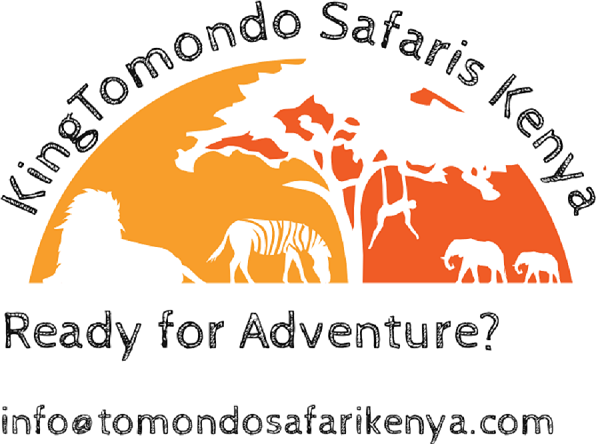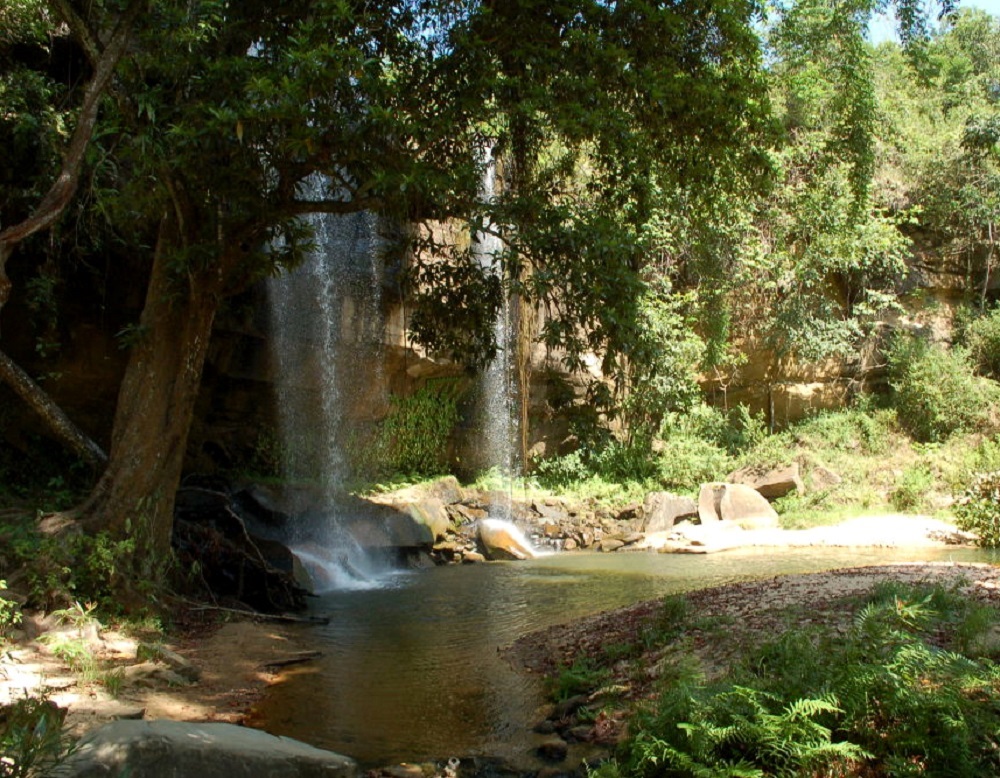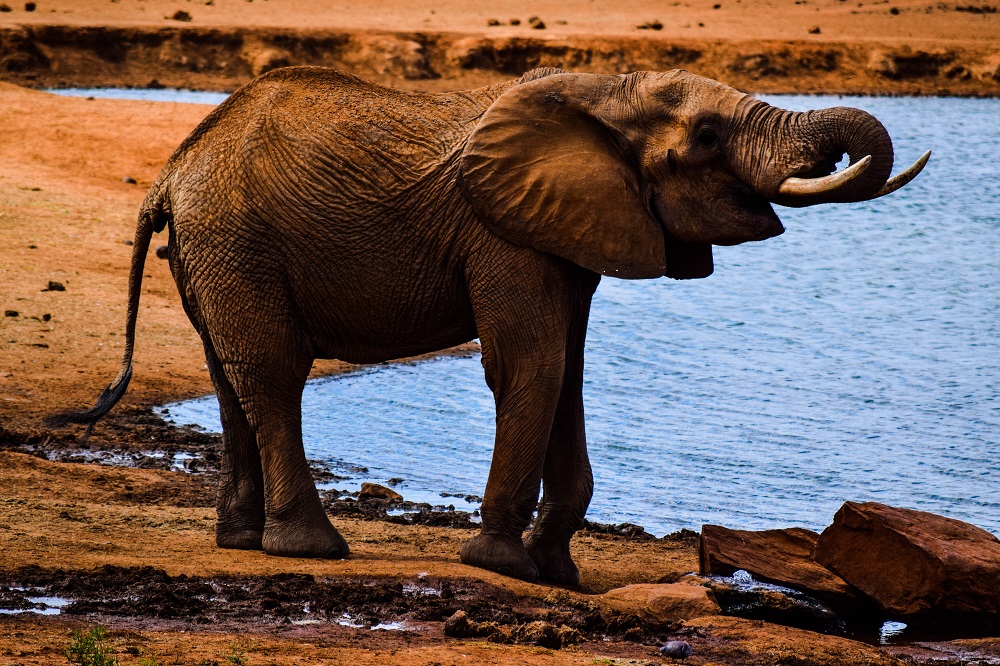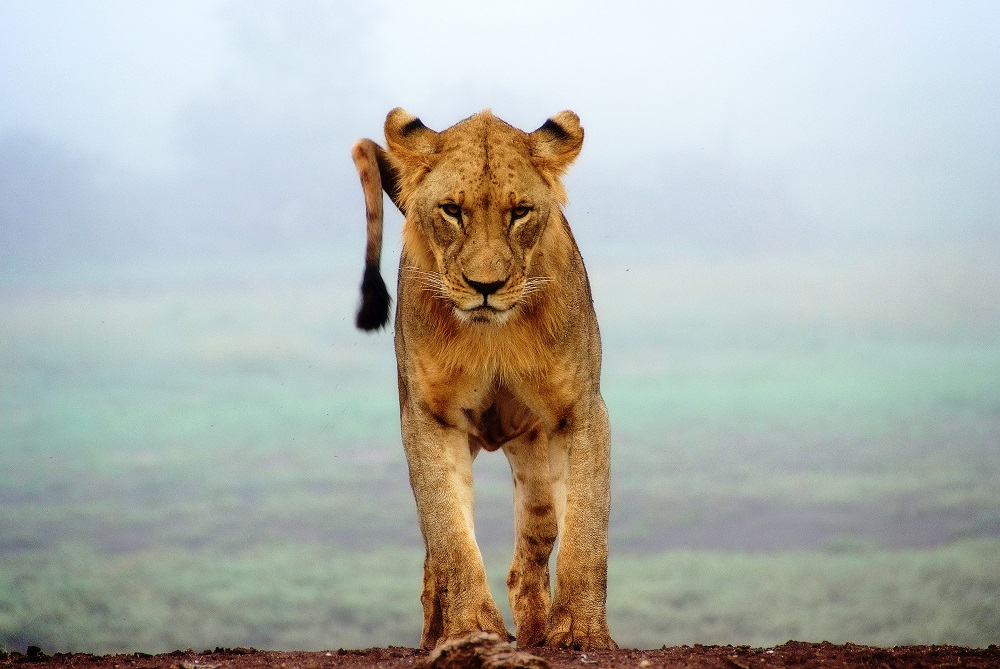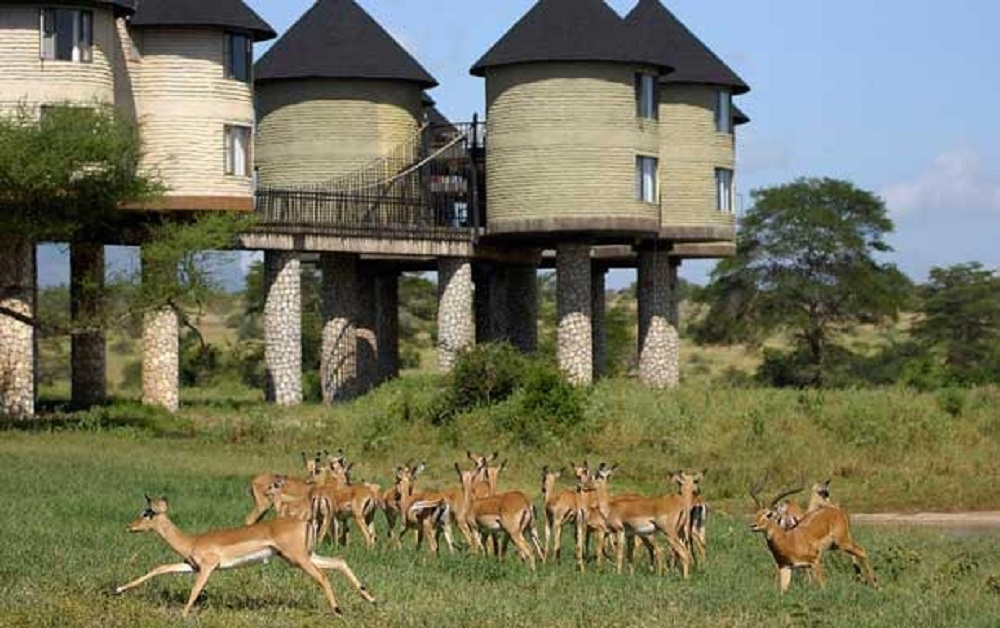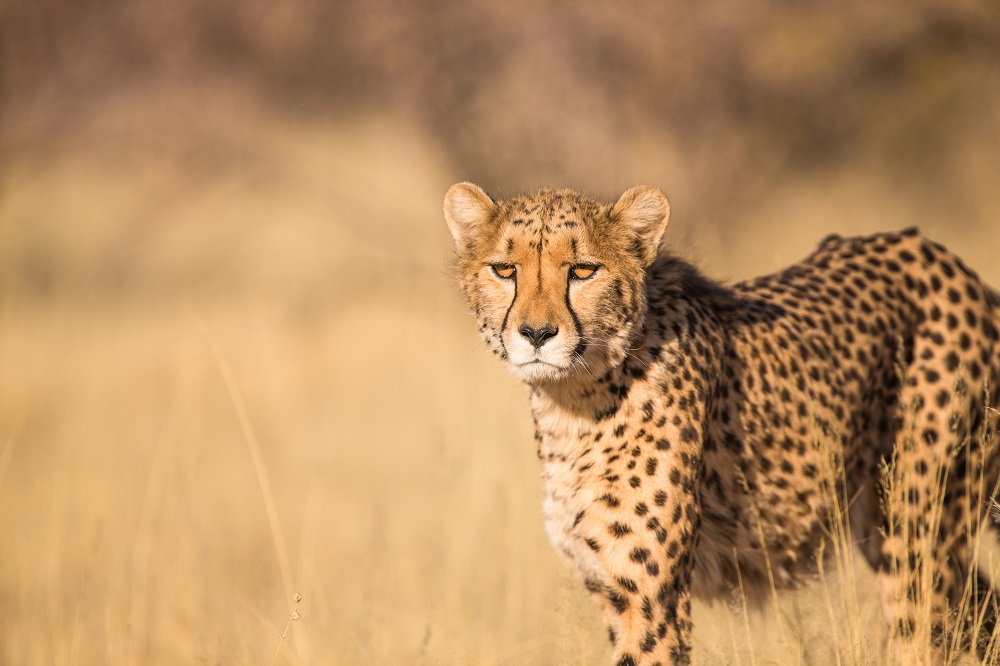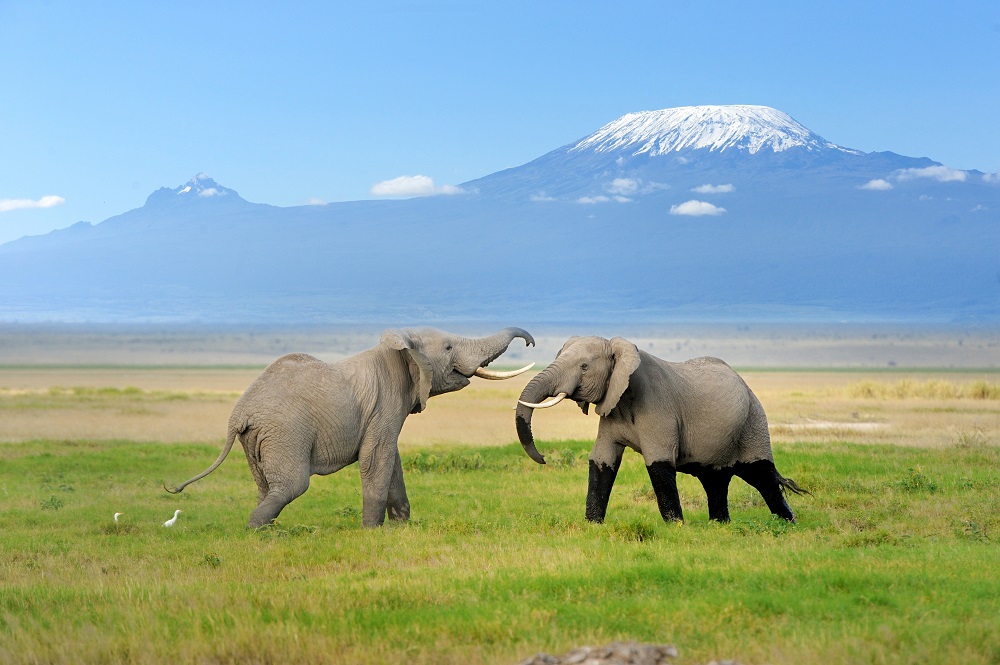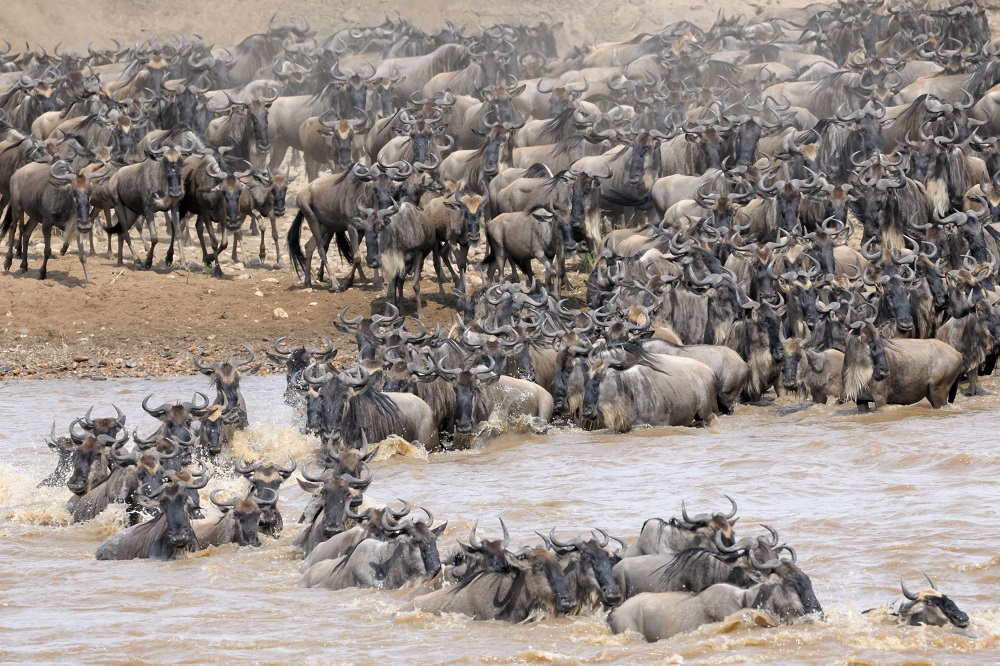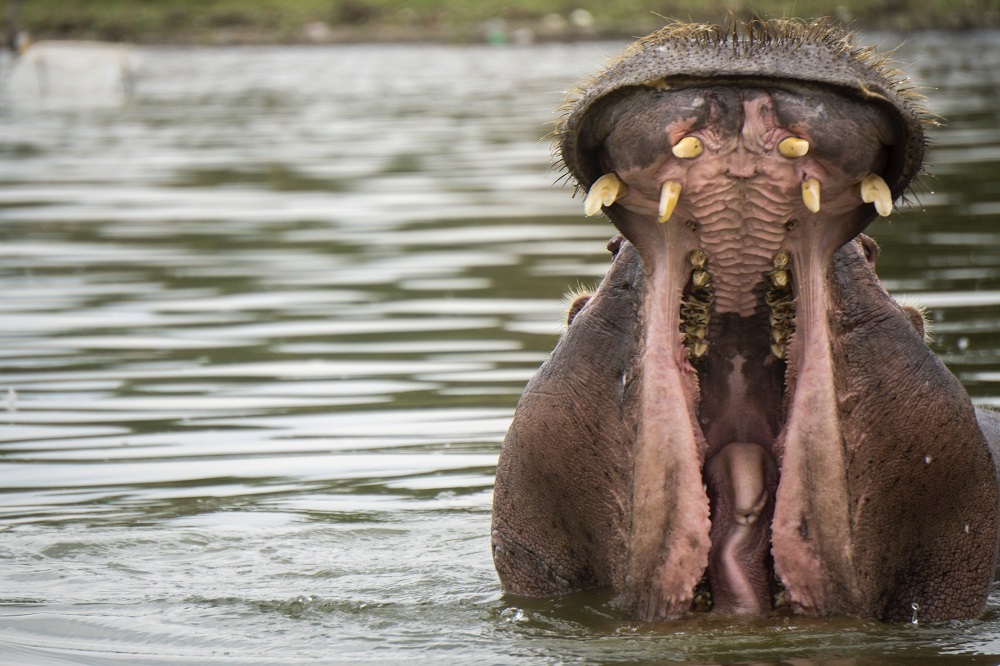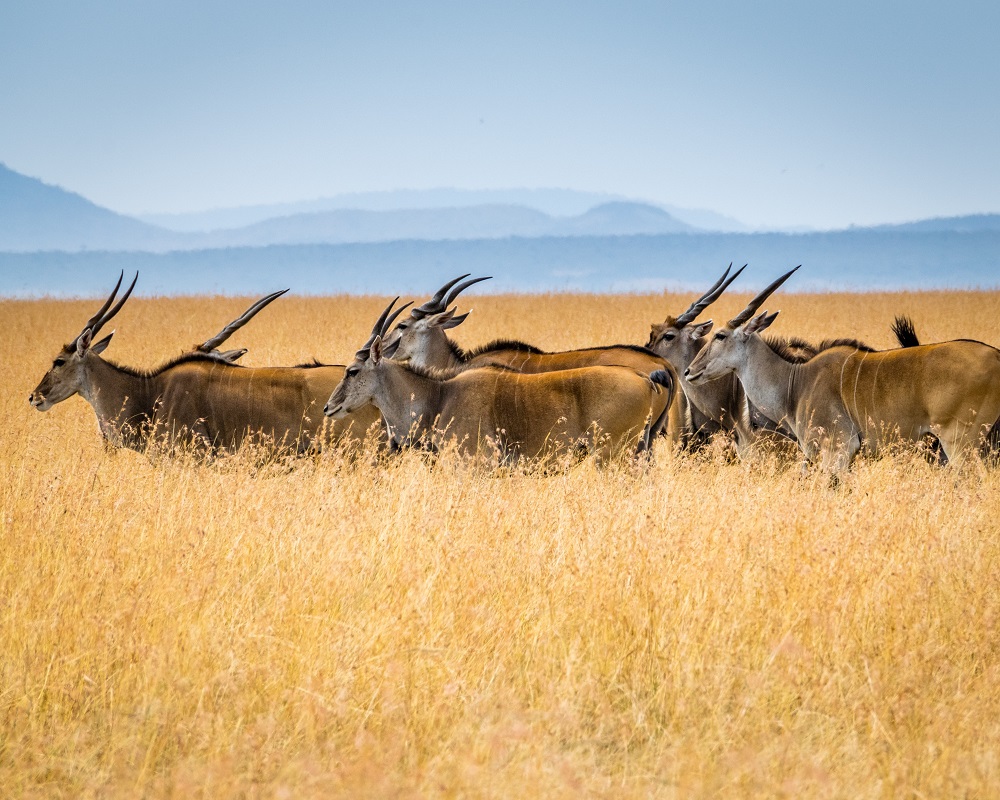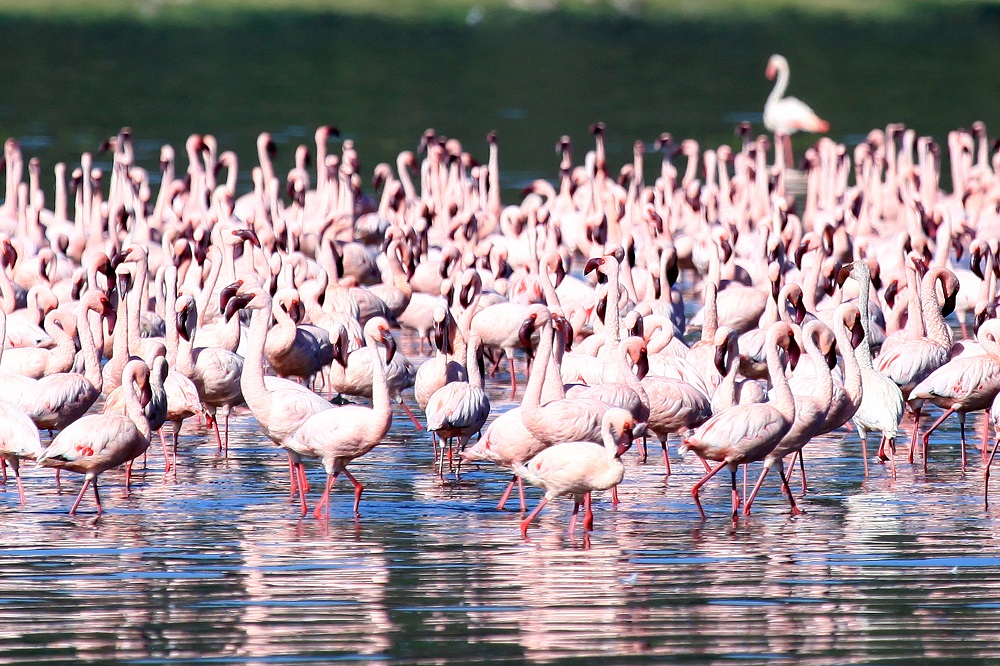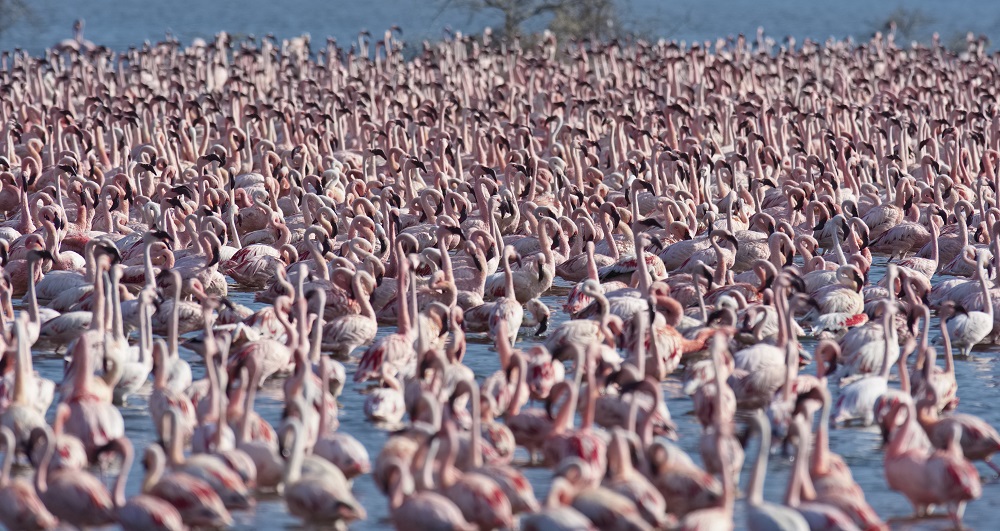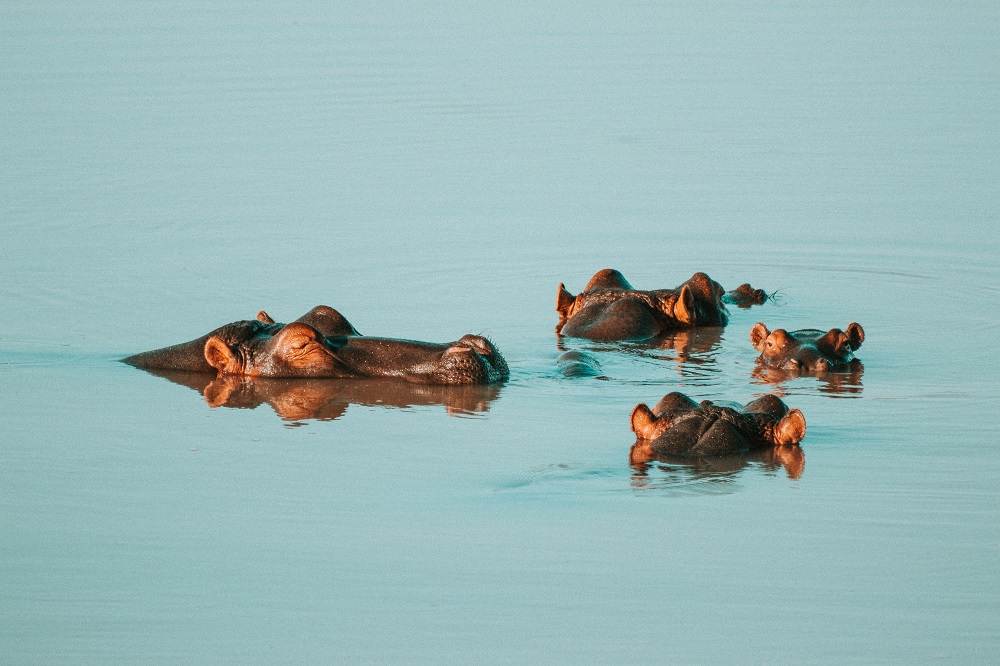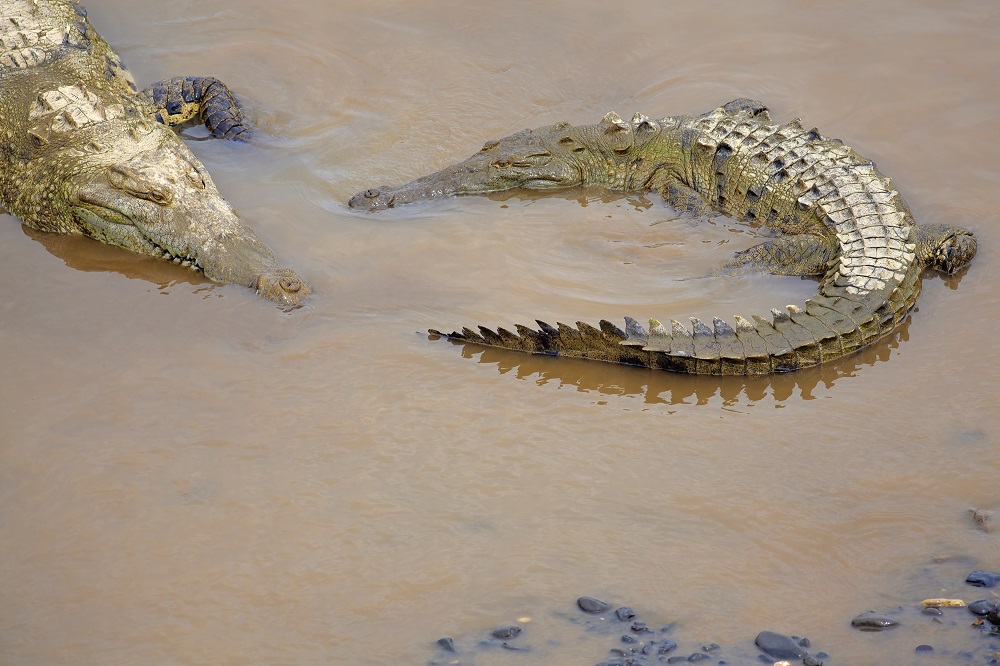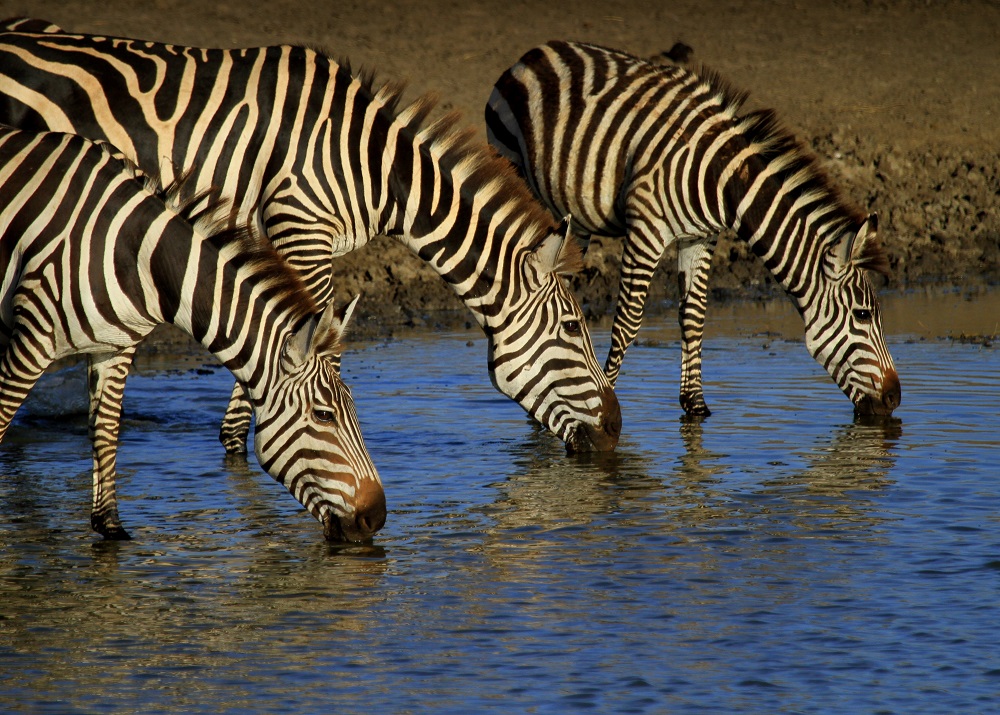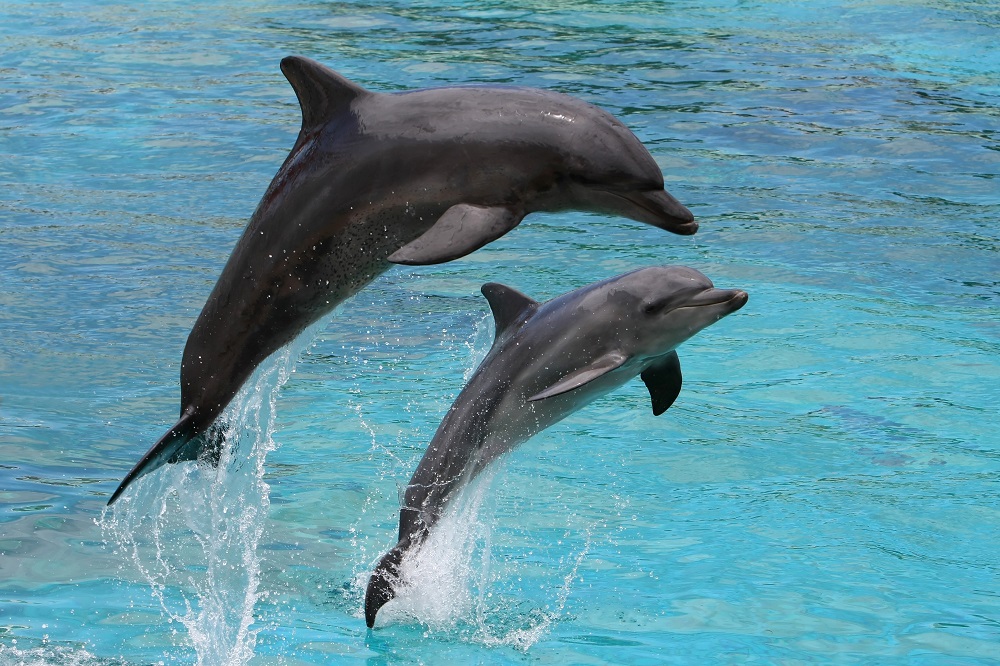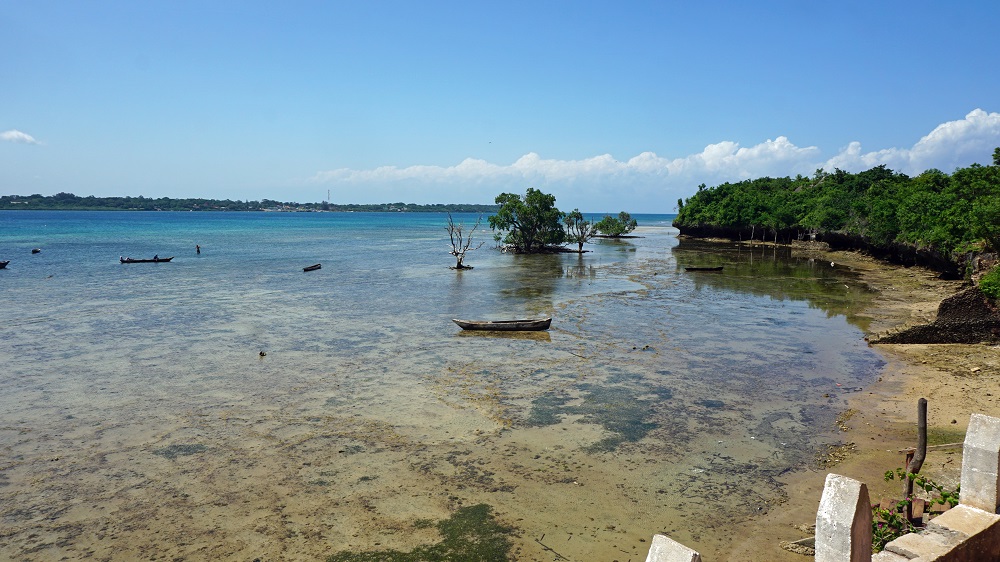There are plenty of National Parks and Game Reserves in Kenya.
Deciding which National Parks and Game Reserves to visit during your private safari can be a little challenging. The information on this page will help you making the best choices.
Make sure to also check out our additional information on your safari in Kenya!
Shimba Hills National Reserve
The magical Sheldrick Falls that you can admire to your left are but one of the stunning features that make the Shimba Hills National Reserve a hot tip for any Safari.
The Reserve which is situated about 30km from Mombasa and can be reached from famous Diani Beach within 45 minutes invites for a relaxed day trip into the green.
Exploring the hilly landscape with its rich vegetation, you may encounter Forest Elephants, Buffaloes, Giraffes, Forest Hogs, Bucks, various kinds of Monkeys and Leopards. African Sea Eagles are majestically sliding over the water and make use of their marvelous voice…
And whilst listening to their wonderful concert, with a bit of luck you will spot the rare Sable Antelopes that have made the Park famous and can not be found anywhere else in Kenya.
Shimba Hills – Africa can be so close…
Tsavo East National Park
Among all National Parks and Game Reserves in Kenya, Tsavo is Kenya’s biggest National Park. For administrative reasons, it was divided into Tsavo East and Tsavo West in 1949.
Tsavo East is an epitome of East African beauty. The vegetation is as diverse as the animals which we can spot here. All big Cats, Giraffes, Zebras, more than 500 different species of birds and many more animals flourish in the Savannas of the park.
But what Tsavo East is best-known for are the “Red Elephants” that call the park home. They owe their rather fancy colour to the bright-red laterite soil which covers the park and which the elephants use to protect their sensitive skin from insects and sun.
Tsavo West National Park
When we travel west, Tsavo shows us a different face. The landscape is much more hilly; numerous volcanic craters rise from the plains. Fields of lava remind us of long-ago eruptions. The fauna of the Tsavo West is very rich, beside the Big Five it is home to further numerous species.
Given the rich vegetation, the animals can be tricky to spot at times. However, this should not discourage you, but in fact can make your Safari experience even more exciting. The reward is worth the extra patience!
A special treat is a visit to the Tsavo West Rhino Sanctuary, where you can admire the endangered Black Rhino. And to top your Safari Adventure off, you can have a closer look at Hippos, Crocs and Fishes at Mzima Springs. Quite literally, as you enter an underwater chamber and – with a bit of luck – get face-to-face with aquatic life!
Taita Hills Wildlife Sanctuary (Salt Lick)
The Taita Hills Wildlife Sanctuary is a marvelous private Game Reserve bordering Tsavo West National Park. Situated at the foot of Mount Kilimanjaro, the Reserve grants vision of scenic savannah, bushlands and rock formations.
More than 350 species call the Taita Hills Sanctuary home and with a bit of luck you will spot Elephants, Lions, Leopards, Bucks, Gazelles and numerous other impressive animals. Its geographical proximity to Tsavo West National Park allows for Game drives both within Taita Hills and Tsavo.
Lumo Community Wildlife Sanctuary (Lions Bluff)
Looking for an adventure off the beaten paths? If yes, the privately owned Lumo Wildlife Sanctuary could meet your taste.
Located right in the middle of Tsavo East and West, the Sanctuary was created as an incentive to conserve the region’s natural wonders. During your Safari in Lumo you will spot Elephants, herds of Buffaloes, Lion families, Austriches and the occasional Leopards and Cheetahs.
Visiting Lumo will not only benefit yourself by creating memories of a lifetime, it will also ensure that the protection measures can be upheld in the future.
Amboseli National Park
♪ ♫ “…as sure as Kilimanjaro rises like Olympus above the Serengeti…” ♪♫
It is not only since Toto’s catchy tune “Africa”, that Mount Kilimanjaro, the highest mountain in Africa, has come to legendary glory.
Travelling through Amboseli National Park grants the visitor the unparalleled chance of coming face-to-face with the myth. Anyone will agree it’s a magical moment when the mountain emerges from the cloud layers into bursting sunshine.
In this breathtaking landscape you will have opportunity to spot Zebras, Wildebeests, Gazelles, Buffaloes, Warthogs, Giraffes, Bucks, all sorts of predators and even some Rhinos. But what will impress you most are the many Elephants which grow especially big here. Amboseli is one of the most popular National Parks and Game Reserves in Kenya
Maasai Mara Game Reserve
The Maasai Mara is undoubtedly the most famous reserve among all the National Parks and Game Reserves in Kenya and is well-known for its astonishing richness in wildlife. Its name derives from the Maasai people, the ancestral inhabitants of the area, who still call the wide plains of Kenya and northern Tanzania home.
The Maasai Mara grants good chances of meeting the Big Five face-to-face. An unforgettable view is the Wildebeest Migration from July to November, when millions of Gnus and Zebras migrate from the Serengeti National Park in Tanzania in search for greener pastures. With them come the predators, patiently waiting for their chance…
Lake Naivasha
Lake Naivasha is the highest-lying lake in the eastern arm of the East African Rift Valley and one of two fresh-water lakes in the region. Lake Naivasha is situated around 70km from Nairobi, making it an ideal destination for trips and in-between-stops during your Safari.
Naivasha is a paradise for all sorts of Water Birds: Pelicans, Herons, White-Tailed Eagles, Geese and Ducks are found in plentiful numbers. Hippos take baths or are resting lazily around the shores of the lake. Wildebeests and Impalas graze close by.
And in Naivasha, you are not a bystander to the action! You can be right in its middle! Booking a small boat and navigating right through herds of Hippos is a rather special experience that – we guarantee for that – you won’t forget.
Aberdares National Park
If someone had to come up with a total contrast programme to the usual safari setting, they couldn’t propose anything more fitting than the Aberdares. In comparison to all the other National Parks and Game Reserves in Kenya, this one is strikingly different.
Rising up to 4000m, the Aberdares National Park is characterized by wild mountain ranges covered in thick mist. Cascades and falls dominate the picture, testifying to the area’s humid climate.
The thick green of the lower-lying plateaus is home to Elephants, Buffaloes, Bush- and Waterbucks, Giant Forest Pigs and Leopards. Leopards? Yes, but something about them is different. Equipped with a good portion of luck, visitors might spot one of the rare Black Leopards that call the Park home.
The equally rare Black Serval and the most beautiful of Antelopes, the Eastern Bongo, are also hiding somewhere out there…
The Aberdares retain an air of mistery – will you be able to unlock some of their secrets?
Meru National Park
If you are looking for wilderness, for adventure far from mass tourism, this Park is for you. Little visited and utterly unspoilt, few places are comparable to the remote and rugged atmosphere found here.
The area of the Meru National Park is crossed by numerous, constantly water-bearing narrow rivers which originate in the volcanic Nyambene mountains 20 km away.
From the hilly, wet northwest the landscape flattens to the east, as savannah areas are gradually becoming dominant. Mountains soften up the picture of red earth and wide grass plains.
Meru National Park is rightfully considered one of Kenya’s most species-rich wildlife areas. Grevyzebras, reticulated Giraffes, Grant-Gazelles, Kirk-Dikdiks, Kongonis, Eland Antelopes, Impalas, Waterbucks, Hippos and Crocodiles on the shores of the rivers will please they eye of the observer as much as the herds of Buffaloes close by.
Lake Nakuru National Park
A lake in pink – that’s probably the best way to describe Lake Nakuru. Up to two million Flamingos nest around its shores, giving the lake its unique colour. Sometimes the birds are present in such vast numbers that the lake’s surface can hardly be seen.
But the beautiful birds are not the only attraction of Lake Nakuru National Park which centers around the lake and lies about 160km northwest of Nairobi. About 450 more species of birds can be found here, together with fifty species of mammals.
Special attention is paid to an integrated conservation area for White and Black Rhino. In one of Kenya’s largest Rhino sanctuarys, rangers protect the endangered species from poaching.
Towards the east of the lake, we can take a look at the biggest Euphorbia Forest of Africa, tall, cactus-like trees which are not only visually appealing, but are also providing a unique habitat for the Park’s wildlife.
Lake Bogoria National Reserve
Lake Bogoria is a saline, alkaline lake that lies in a volcanic region south of Lake Baringo, a little south of the equator. Lake Bogoria, like Lake Nakuru, is home, at times, to one of the world’s largest populations of lesser Flamingos. Backed by the green flanks of the Siracho Escarpment, the lake’s barren shores make for a dramatic scene.
The lake is also famous for its natural geysers and hot springs, which are situated along the banks of the lake and within the lake. Some of the geysers erupt to a height of 5 metres! The lake which is located about 250km northwest of Nairobi seems like a hostile environment at times, but the Flamingos seem to enjoy it. And so will you!
Lake Baringo
About 60km north of Lake Bogoria, we encounter another breathtaking lake. Here, in the second most northern Kenyan Rift Valley Lake (after Lake Turkana), little is seen of the tourist traffic sometimes present in Naivasha and Nakuru. As most tourists don’t travel up that far north, Lake Baringo is surrounded with an atmosphere of remote privateness.
Apart from Lake Naivasha, Lake Baringo is the only freshwater lake in the Rift Valley. Enjoying the scenic landscape of the Tugen Hills, an uplifted fault of volcanic and metamorphic rocks towards our west, and the Laikipia Escarpment to the east, we can spot Hippos, Crocodiles and an abundance of bird species.
There are a number of small islands to visit in Lake Baringo which can be reached by motor boat from the mainland. One definitely worth a visit is Ol Kokwe Island, which has natural hot springs.
As the hot springs and Flamingos of Lake Bogoria are only a short drive away, it makes sense to explore both of the so very different ecosystems.
Samburu National Reserve
Kenya’s north is characterized by hot and dry climates. Yellow grass, red earth and huge old trees paint a romantic picture of African beauty. But the environment within Samburu National Reserve is as challenging for its inhabitants, as it is beautiful.
Water is scarce here, and the Ewaso Ng’iro, the gently flowing river in Samburu, is the Reserve’s lifeline. Buffaloes, Elephants, Giraffes, Gazelles and occasionally Wild Dogs are indulging in the refreshing wet. Leopards and Lions are waiting for the heat of the day to wear off as they patiently gaze at their evening prey. But they are not the only predators at the scene. Huge Nile Crododiles await everyone who is all to impatient to get to the river’s shores…
The wildlife found here is what makes Samburu so unique. Many species (especially the so called “Samburu Five”) can only be observed here; they do not exist in the other National Parks and Game Reserves in Kenya.
Shaba National Reserve
Shaba is the largest of the three intertwined ecosystems Samburu, Buffalo Springs and Shaba. Amidst mountains and along the Ewaso Nyiro River, a charming landscape emerges in front of us. The river originates in the Aberdare Range north of Kenya’s capital Nairobi and then flows north and plunges down the 72m Thompson Falls in Nyahururu. From there, it continues eastwards via Archer´s Post.
The Shaba Reserve is named after the copper-coloured sandstone hill of Shaba, a remnant of lava flows from the Nyambeni heights somw 5,000 years ago.
Within the Reserve we encounter well over 400 species of birds, different kinds of Antelopes and Gazelles, Leopards, Cheetahs, Elephants, Lions and Crocodiles. Similar to Samburu, Shaba National Reserve is home to especially beautifully coloured Giraffes and Zebras.
Wasini Island
Wasini, well within reach of Diani Beach, is a tropical dream of beauty, peace and unforgettable impressions.
While the small island strictly speaking is neither a National Park, nor a Game Reserve, we still decided to add it to this list. If you are new to Kenya, you should definitely have a look at this marvelous island, and even experienced Kenya Safarists love the island for its relaxed atmosphere and beauty.
Wasini is located in the most southeastern part of Kenya, the closest village being the peninsula Shimoni. The major economic activity is fishing, the impressive catches on Shimoni’s local market testify to that. From Shimoni, visitors can travel to Wasini Island, which has neither streets, nor cars, and thus exhibits a wonderfully calm and relaxed atmosphere.
How to best spend time on Wasini is a difficult question, because there is quite a number of rewarding activities. Snorkeling on the Island’s colourful reefs, travelling on a Dhow (small traditional sailing boat) – often in company of joyfully jumping dolphins to both sides of the boat – , scuba diving alongside sea turtles or enjoying a seafood menu fresh from the net to the plate; Wasini offers a million of choices.
